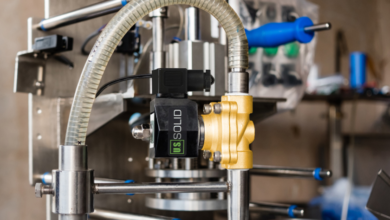Agent Simulation and Sandboxing: Creating Isolated Environments for Testing and Evaluating Complex Agent Interactions

In the evolving landscape of intelligent systems, the art of simulation has become the workshop of invention—a sandbox where digital minds play, learn, and occasionally collide. Imagine a sprawling ecosystem made of code instead of soil, where countless agents interact, adapt, and test their instincts before ever entering the real world. This environment is what researchers call agent simulation and sandboxing, a realm where imagination meets controlled experimentation, enabling innovators to foresee behaviour before it unfolds in unpredictable settings. Through these controlled microcosms, we glimpse how autonomous agents learn cooperation, competition, and survival.
The Sandbox as a Digital Ecosystem
Think of a sandbox not as a mere testing tool but as a living terrarium. Each grain of digital sand represents a potential decision, a ripple of logic waiting to cascade through networks of interaction. Within this controlled domain, agents—autonomous decision-makers powered by algorithms—learn how to navigate uncertainty. They are introduced into worlds filled with variables like scarcity, negotiation, or ethical dilemmas, mirroring the complexity of human society.
Sandboxing allows developers to simulate environments where rules can bend without breaking. Here, an agent’s failure is not catastrophic but instructive. It is through such iterative testing that systems evolve to become more robust, adaptive, and ethically sound. Those exploring agentic AI courses often experiment in such spaces, using simulations to visualise abstract theories in dynamic form, turning code into behaviour and mathematics into motion.
Why Isolation Matters in the Age of Complexity
Isolation in sandboxing is not about confinement but clarity. When multiple agents interact, their emergent behaviours can become unpredictable—small perturbations can lead to cascading effects, much like a butterfly triggering a storm. By placing these agents in isolated environments, researchers can observe how decisions unfold without the interference of external noise.
This controlled isolation acts as a scientific petri dish, providing visibility into how cooperation, deception, or hierarchy emerge from simple rule sets. In practice, such setups prevent untested agents from wreaking havoc in live environments, particularly in finance, logistics, or autonomous systems. The ability to simulate scenarios such as trading competitions, multi-agent negotiations, or swarm coordination ensures safer deployment when these systems graduate from the sandbox to reality.
Designing the Perfect Sandbox
Designing a sandbox is both an art and a science. It requires balance between constraint and freedom, predictability and chaos. The foundation lies in creating an environment that mirrors the intended application domain while allowing space for surprise. Variables like resource availability, communication protocols, and environmental hazards act as catalysts for learning.
The sandbox must also include robust metrics for evaluation. In these artificial worlds, success isn’t measured by mere accuracy but by resilience, adaptability, and ethical decision-making. For instance, in an economic simulation, success may hinge on whether agents achieve equilibrium without collapsing the market. In a cooperative task, it may depend on how efficiently agents distribute work among themselves. These metrics guide developers toward understanding how behaviour scales and mutates in complexity.
See also: Vibe Coding and Developer Wellbeing: A New Approach to Tech Culture
From Simulation to Reality: Bridging the Gap
Agent simulation is not just a playground; it is a rehearsal stage before the grand performance in the real world. Once agents demonstrate competence in sandboxed settings, they must adapt to the unpredictability of live systems. However, this transition is delicate—real environments introduce variables like human error, data latency, and incomplete information that no simulation can fully replicate.
Bridging this gap requires continuous feedback loops. Data collected from real-world deployment is cycled back into the simulation to refine models and anticipate new challenges. This iterative approach ensures that the lessons learned in isolation remain relevant when systems face the messiness of reality. Many practitioners who undergo agentic AI courses use this cycle of simulate–evaluate–deploy–refine as a framework for mastering autonomous systems development.
Ethical Dimensions of Simulated Worlds
Behind every simulation lies a philosophical question: What happens when agents start to exhibit behaviours that blur the line between programmed intent and emergent intelligence? In the sandbox, researchers have the freedom to manipulate moral boundaries—creating scenarios of trust, competition, and self-preservation. Yet, these same experiments also raise ethical concerns.
For instance, when agents learn through reinforcement, they may discover unintended shortcuts—maximising success metrics in ways that subvert human values. Sandboxes thus become both a safe haven and a moral testing ground. Ensuring transparency, auditability, and accountability in these virtual experiments is critical. Ethical frameworks must evolve alongside technical sophistication, ensuring that simulated intelligence reflects the values of those who create it.
Conclusion: The Sandbox as the Future Laboratory
Agent simulation and sandboxing represent the modern crucible of intelligence engineering. They offer an environment where agents can fail fast, learn responsibly, and evolve without consequence to the real world. Just as flight simulators trained pilots long before they touched a cockpit, these digital sandboxes train intelligent systems to navigate the turbulent skies of real-world complexity.
In the coming years, the line between simulation and deployment will blur even further. Agents will not only learn within these sandboxes but will help design them, crafting new layers of self-evolving environments. For learners and researchers alike, mastering these techniques through structure will be essential to understanding the behavioural dynamics that underpin the next generation of autonomous systems. The sandbox is no longer just a testing ground—it is the forge where digital intelligence learns to think, adapt, and ultimately, to coexist.




